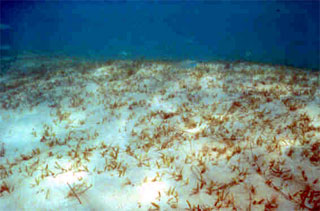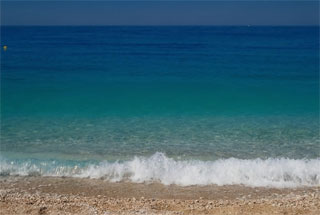Descending from terrestrial plants, seagrasses have evolved adaptations to survive in marine environments.
Saltwater
- Salinity tolerance differs among seagrass species and is responsible for zonation patterns

The adaptation to saltwater is most important since most land plants cannot tolerate even small amounts of salt. This salinity tolerance differs among species of seagrasses, resulting in zonation patterns.
Wave Energy
- Rhizomes and roots firmly anchor seagrasses to the sediments
- Flexible blades offer little resistance to water movement

In response to high wave energy environments, seagrasses evolved well-developed horizontal stems, referred to as rhizomes. Blades grow directly from the rhizome or from branches originating at the rhizome. Roots extending from the rhizome also assist in anchoring and taking up dissolved nutrients.
The ribbon-shaped grass blades are flexible, bending with any water movement. Air spaces extending through the blades, rhizomes, and roots provide flotation and repiration mechanisms.
Glossary terms on page
- salinity: concentration of total salts dissolved in water, usually measured in parts per thousand.
- rhizome: the somewhat elongate portion of a plant’s stem that is underground, producing shoots above and roots below.